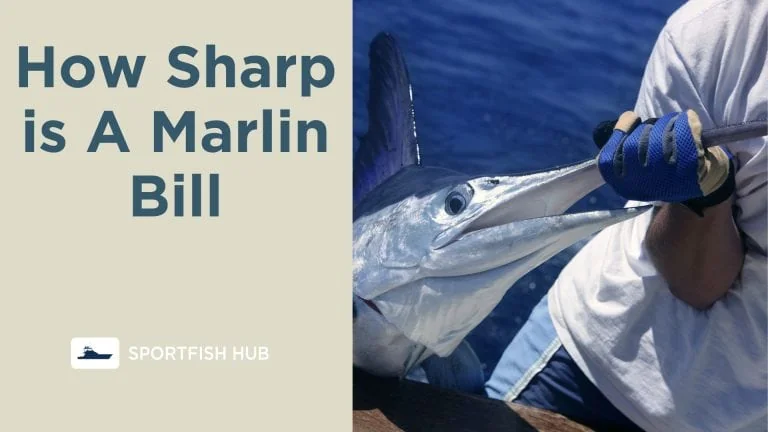A marlin’s bill is one of the sharpest in the ocean. The long, pointed bill that gives marlin their iconic appearance is a formidable weapon and essential tool for these large sport fish.
You might also check out our article on how sharp a swordfish sword is.
The Marlin’s Bill is Extremely Sharp
Marlin bills have razor-sharp edges capable of easily piercing through prey. Here are some key facts about how sharp and effective a marlin’s bill is:
- Made of dense bone – A marlin’s bill is composed of dense, calcified bone. This gives the bill strength and rigidity while remaining lightweight.
- Sharp cutting edges – The bill has sharp lateral edges running most of its length. These cut through flesh with ease when a marlin swings its head.
- Penetrating tip – The tip of the bill comes to an extremely fine and narrow point. This allows easy penetration when a marlin impales prey.
- Sword-like shape – The bill’s flattened shape is aerodynamic while also providing sharp surfaces on both sides. This maximizes its cutting ability.
- Heavily calcified – The bone in a marlin’s bill contains high levels of calcium deposits. This fortifies it, creating tooth-like serrated edges.
When you combine its solid construction with the velocity a marlin can achieve with its bill, the result is an incredibly effective slashing and stabbing weapon.
Interesting Fact: Bills of large marlins can generate enough force to pierce wooden boats. There are many historical pictures documenting this.
How Marlin Use Their Sharp Bills
Marlin rely on their sharp bills for two main purposes – hunting prey and defending themselves.
Hunting Prey
- Impaling fish – Marlin commonly hunt by impaling small tuna, mackerel, and other fish with their bill’s razor-tip.
- Slashing through schools – When speeding through bait balls and fish schools, marlin will rapidly slash with their bills, wounding prey.
- Leverage for tearing – After spearing prey, marlin will shake their heads violently, using their bill as leverage to tear flesh.
Recommended Reads: Can a Marlin Kill a Shark?
Defense
- Warding off predators – Marlin bills help deter shark and other attacks. The bill’s sharp tip can inflict nasty gashes to predators.
- Intraspecies sparring – Male marlin often cross bills when competing for mates. Their bills allow them to duel without causing serious injury.
- Protecting young – Female marlin are extremely defensive of their young and will strike out with their bills to fend off any perceived threats.
Bill Shape and Size by Marlin Species
While all marlin have sharp bills, their shape and dimensions vary by species.
| Species | Bill Length | Bill Shape |
|---|---|---|
| Blue Marlin | Up to 5 feet long | Spear-shaped with round cross-section |
| Black Marlin | Up to 4 feet long | Flatter and wider than blue marlin bill |
| Striped Marlin | Up to 3 feet long | Most spear-like bill that is round in cross-section |
The differences in bill size and shape reflect the subtle differences in how each marlin species hunts and feeds. For example, the black marlin has a shorter, wider bill because it more often feeds on smaller fish near the ocean surface.
Here is a comparison table of marlin bills versus other species:
| Species | Bill Shape | Bill Function |
|---|---|---|
| Marlin | Pointed, round cross-section | Spearing prey |
| Swordfish | Flattened, wider | Slashing through water |
| Sailfish | Long, pointed | Slashing and stunning prey |
| Spearfish | Short or moderate length | Unknown, likely similar to marlin |
Final Thoughts
A marlin’s extended, pointed bill is one of the ocean’s most impressive anatomical weapons. Composed of dense, calcified bone honed to razor-like sharpness at the edges, a marlin’s bill is an engineering marvel allowing it to slash, spear, and tear prey with immense effectiveness. Marlin truly showcase how evolution can shape an incredible organ serving a valuable purpose for a species’ survival.











